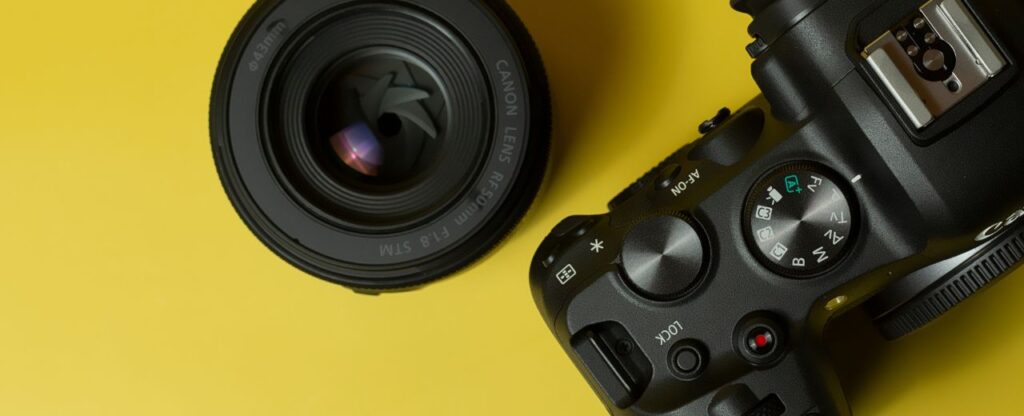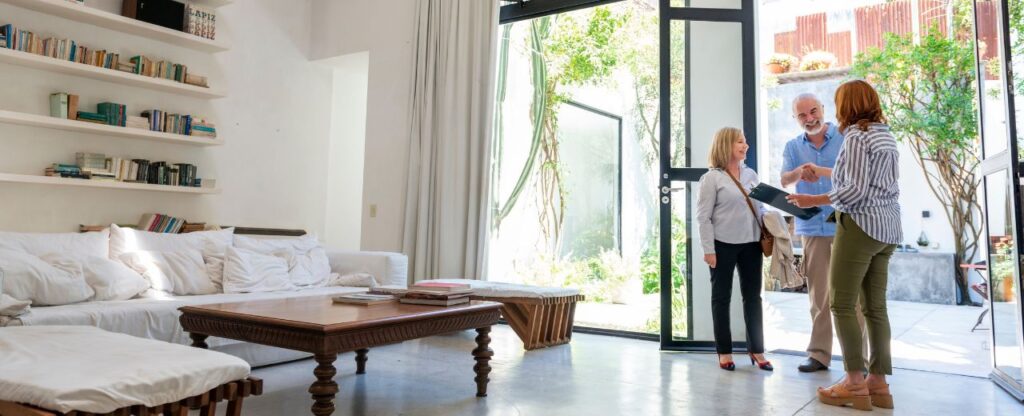Starting a real estate photography business can be an exciting venture for those with a passion for capturing beautiful and functional spaces. As the demand for high-quality property listings grows, skilled photographers are increasingly sought after to bring these spaces to life through their lenses.
In this guide, we’ll explore the essentials of getting into real estate photography, from honing your technical skills to marketing your services effectively. Whether you’re looking to turn a hobby into a profession or aiming to secure more real estate photography jobs, you’re in the right place to begin your journey.
What is Real Estate Photography?
Real estate photography is used to market properties. A real estate photographer captures the aesthetics and utility of a property in a way that entices buyers, using high-quality images to emphasize natural space and light to display property and convey a sense of home and possibility.
Real estate photography’s core purpose is creating a vision of a life that potential property buyers can imagine themselves living. A real estate photographer must capture the aesthetics and utility of a property in a way that entices buyers. Good real estate photography should emphasize space and natural light, showcasing each room to its fullest potential. These images display a property and convey a sense of home and possibility.
How Much do Real Estate Photographers Make in the US?
Real estate photographers’ earnings can vary widely based on location, experience, and the range of services they offer. On average, real estate photographers in the US can earn between $40,000 to $90,000 annually. Those who offer specialized services, such as drone photography or virtual tours, can command higher rates and potentially earn more.

11 Steps to Start Your Real Estate
Photography Business
1. Start Up Costs/Budget
| Item | Price | Description |
|---|---|---|
| Editing Software | $20-$50/month | Essential for post-processing and enhancing images. |
| Client Management Software | $10-$30/month | Helps manage bookings, client communications, and invoices. |
| Equipment | $2,000-$5,000 | Includes camera body, lenses, tripod, and lighting gear. |
| Website | $100-$500/year | Necessary for showcasing portfolio and services. |
| Business Insurance | $300-$600/year | Protects against liability and equipment damage. |
| Total | $2,430-$6,180 | Sum of initial start-up costs. |
2. Essential Equipment for a Real Estate Photographer
Starting in real estate photography requires some essential equipment to ensure high-quality output. The most important tools include a reliable DSLR or mirrorless camera with a full-frame sensor, wide-angle lenses (typically 10mm and 24mm), and a sturdy tripod to eliminate unwanted movement and ensure sharp images.
Additionally, consider investing in a sound flash system and diffusers to manage different lighting situations effectively. This basic gear set will enable you to produce professional-level photos that can significantly boost your portfolio and appeal to high-end clients.
| Item | Cost | Example | Purpose |
|---|---|---|---|
| Camera Body | $1,500-$3,000 | Canon EOS R5 | High-resolution images, low-light performance. |
| Lense | $500-$1,500 | Canon EF 16-35mm f/2.8L III USM | Wide-angle shots for capturing entire rooms. |
| Tripod | $100-$300 | Manfrotto MT190XPRO4 | Stability for sharp, clear images. |
| Flash | $200-$500 | Canon Speedlite 600EX II-RT | Proper lighting in various conditions. |
| Editing Software | $20-$50/month | Adobe Lightroom | Enhancing and editing photos. |
| Client Management Software | $10-$30/month | Ruoom | Managing client bookings and invoices. |

3. Advanced Tools to Enhance Your Photography
For those looking to take their real estate photography to the next level, incorporating advanced tools like drones for aerial photography or 360-degree cameras for virtual tours can be a game-changer.
These technologies allow you to offer more comprehensive packages to real estate agents and home sellers, capturing a bird’s eye view of the property or immersive virtual experiences that captivate potential buyers. Mastering these tools can set you apart from competitors and often justify higher service rates.
| Item | Cost | Example | Purpose |
|---|---|---|---|
| Gimbal | $300-$800 | DJI Ronin-S | Stabilizes camera for smooth, professional video footage. |
| 360-Degree Camera | $400-$1,000 | Ricoh Theta Z1 | Creates virtual tours, immersive property experiences. |
| Drone | $1,000-$3,000 | DJI Mavic 2 Pro | Aerial photography and videography for expansive property views. |
4. Establish Your Target Market
Identifying your target market is crucial for tailoring your services and marketing efforts effectively. Real estate agents, property developers, and homeowners looking to sell or rent their properties are typical clients. Additionally, interior designers and architects may require high-quality images of their projects, presenting further opportunities.
5. Setting Competitive Pricing Strategies
Setting competitive yet profitable pricing is crucial for the success of your real estate photography business. Research local market rates, factor in your skill level, the complexity of the projects, and the cost of your equipment and travel.
Offering tiered pricing packages can cater to different client needs and help increase your appeal across various market segments.
Package Pricing Sample
| Size | Price | Description |
|---|---|---|
| Small Property (Under 3000 square feet) | $150-$300 | Ideal for properties under 3,000 square feet, includes 20-30 photos. |
| Large Property (Over 3000 square feet) | $300-$600 | Suitable for properties over 3,000 square feet, includes 40-50 photos. |
| Luxury Property | $600-$1,200 | Comprehensive package with drone shots, twilight photos, and virtual tours. |
*Pricing can vary depending on the listing size, price and number of rooms

6. Legal Considerations and Insurance
Navigating the legal aspects of starting and running a real estate photography business is critical. Ensure you have proper contracts that clarify rights to the images, usage terms, and payment details.
Investing in business insurance to protect your equipment and liability is also wise, especially when working on private properties.
Please consult a legal professional who can help you set up the right structure for your business to manage risks effectively.
7. Finding and Securing Real Estate Photography Jobs
Networking is vital in the real estate photography industry. Connecting with real estate agents, designers, or architects can provide you with steady work and referrals.
Joining local business networks and real estate groups can also increase your visibility. Keep an eye on online job boards and freelance websites where real estate photography gigs get posted.
Building solid relationships with existing clients can lead to repeat business and new opportunities through word-of-mouth.
8. Marketing Your Real Estate Photography Business
Like all businesses, having a digital presence is crucial for effective marketing, attracting the right clients, and building a reputable brand
We strongly recommend a professional, easy-to-navigate website highlighting your portfolio, services, and contact information.
It’s also important to show your work on the right platforms. To help you engage with your target audience, share your work on Instagram, Pinterest, TikTok, or LinkedIn.
Active engagement on social media platforms, sharing before-and-after shots, and posting client testimonials can build trust and attract new business.
Direct outreach to real estate agencies should also be considered, as should offering introductory rates or bundled packages to break into local markets.
9. Developing Your Skills and Portfolio
As a budding real estate photographer, continuously improving your skills is vital. Practicing various shooting techniques, understanding post-processing, and learning how to use lighting effectively can significantly enhance your photographs.
Remember, as you take photos, build out your portfolio. This portfolio should reflect your skill level and ability to capture each property’s unique qualities.
Attending workshops and networking with other photographers can provide valuable insights and growth opportunities.

10. Online Courses and Resources
Leveraging online resources and courses can significantly boost your knowledge and skills in real estate photography.
Websites like Udemy, LinkedIn Learning, and CreativeLive offer specialized courses that cover everything from basic photography skills to advanced editing techniques.
- Udemy
- LinkedIn Learning
- CreativeLive
- Youtube (Ideas & Tutorials)
- Pinterest (Inspiration)
These platforms provide valuable information that can help you refine your craft and stay updated with the latest trends and technologies in the industry.
11. Implementing Technology for Efficiency
Tools like online scheduling software can streamline the booking process, making it convenient for real estate photography clients to see your availability and book shoots directly. This integration enhances customer experience and can significantly improve your operational efficiency.
Ruoom is free for solo users and just $7 per user for teams of two or more. Try it free for 60 days to see if it’s right for you. Fill out our onboarding form, and your software will be set up and ready to use in minutes.
Read More: